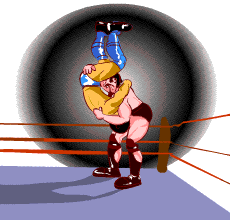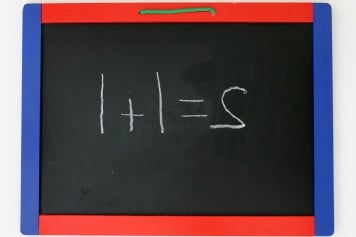
Little Adults beat Wrestlers [Illustration by Anup Singh]
Until I spoke to a few people in my neighbourhood – my story fell flat on its face.
It was all about how wrestling incites aggressive tendencies among kids and how most children below a certain age cannot make out that the shows are stage managed and believe that it is real.
I was planning to back my claim with a report published in the US journal ‘Pediatrics’ a few years ago, which said that children below eight years of age cannot distinguish between what is being said and what is the truth.
The report, which was referring to advertisements on television, said children accept what is being said as true, owing to the particular developmental stage of their faculties at that age.
This report was worth repeating in this context too, I thought, since we are talking about a stage managed show.
An article published on familyeducation.com said: “Can kids who still believe in the tooth fairy separate fact from fantasy when they watch big fights on the small screen?”
The article quoted Diane Levin, professor at Wheelock College, Boston, Massachusetts, and author of Remote Control Childhood: Combating the Hazards of Media Culture, as saying that parents who watch WWF programmes with their children are actually sanctioning violence. Levin is now studying the influence of wrestling on young children’s play and behavior.
The article warned that parents who do not allow their kids to watch wrestling shows, but buy wrestling toys for their children may be well-intentioned, but end up sending mixed messages. “The toys say ‘this is what you can do in play.’ They are a powerful teaching tool,” the piece stressed.
The shows teach children what one can do with one’s body. They drive home the point that one does not need weapons to hurt another person.
After this article, I found a few others, and I had enough material for a piece on the issue. All I needed was a few local quotes to prove that it is also a valid problem here in India.
But that was not to be.
When I got round to collecting quotes, my story vanished into thin air. A week of assiduous research was nullified by a bunch of little adults.
Six-and-a-half-year-old Ketu said he watches WWF because he likes to watch people fight. When I asked him how he could watch people hurt each other, he laughed: “But who says, they are real.”
Ketu’s father, V. Krishnaswamy, says his son has always known the difference between the real and the unreal.
Ishaan, who is also six years old, knows that when a road roller squashes a cartoon character flat on the ground and he shakes himself to get up, it is unreal. “Such things do not happen in real life,” he confirms.
Coming from a six-year-old, doesn’t that sound amazing? But, there is nothing miraculous about it.
Ishaan’s mother, Sunrita Sen, says the ability to distinguish is a fairly recent phenomenon. Sen says she had banned WWF from her household one-and-a-half years ago when she thought her son was too young to separate fact and fiction.
Arti Jaiman, on the other hand, did not have to enforce such rules at home. Her son, Siddharth, learnt that cartoons are a part of a fantasy world very early in life.
When he joined school two years ago, his class teacher had organised exercises focussing on the issue.
“He knows that most of the films on television have been created by minds – that they do not exist in the real world,” she says.
Jaiman’s answer was the final nail in my story’s coffin. And as I saw it bob away in a sea of thoughts, I wondered whether I had just been plain unlucky in the subjects I had found to collect quotes from. Surely, so many research studies could not be wrong.










